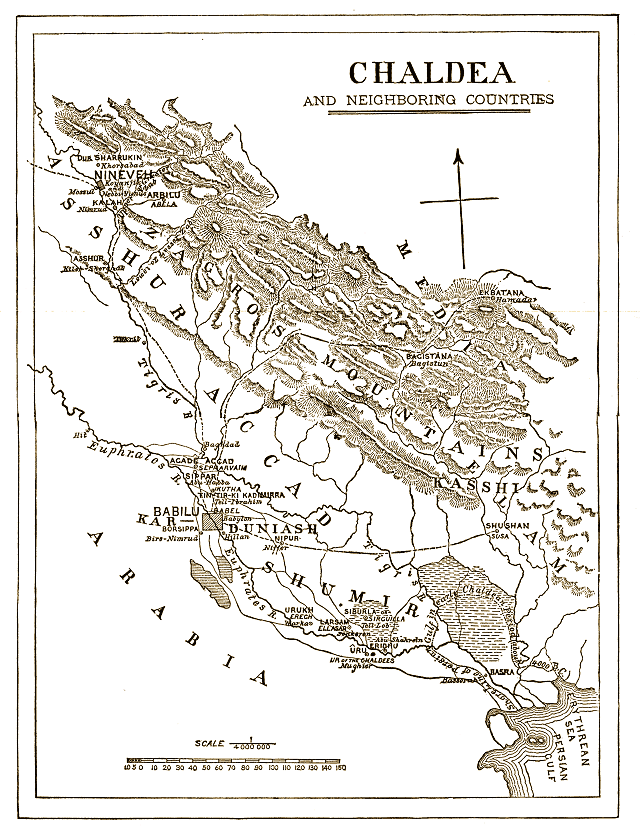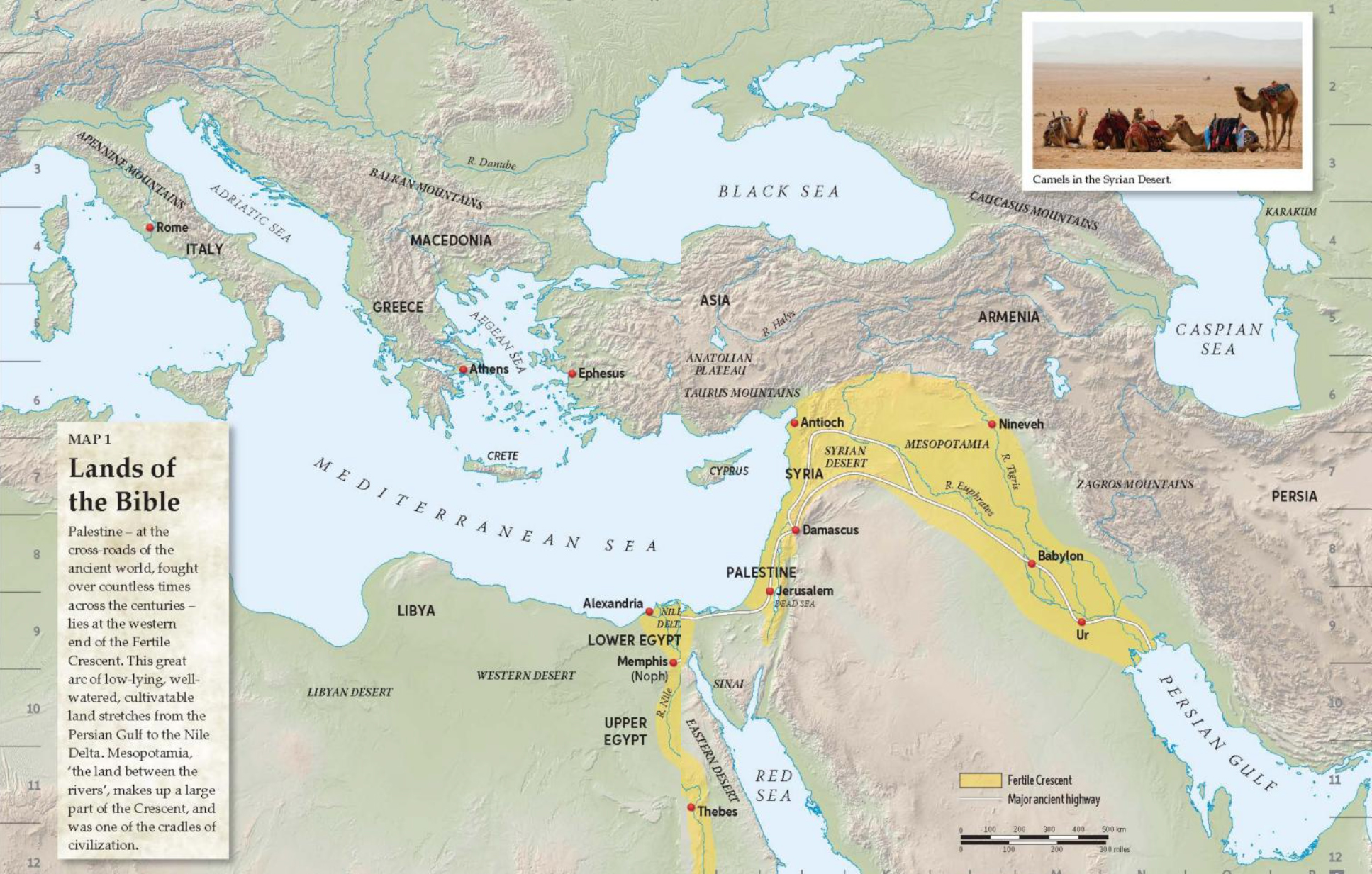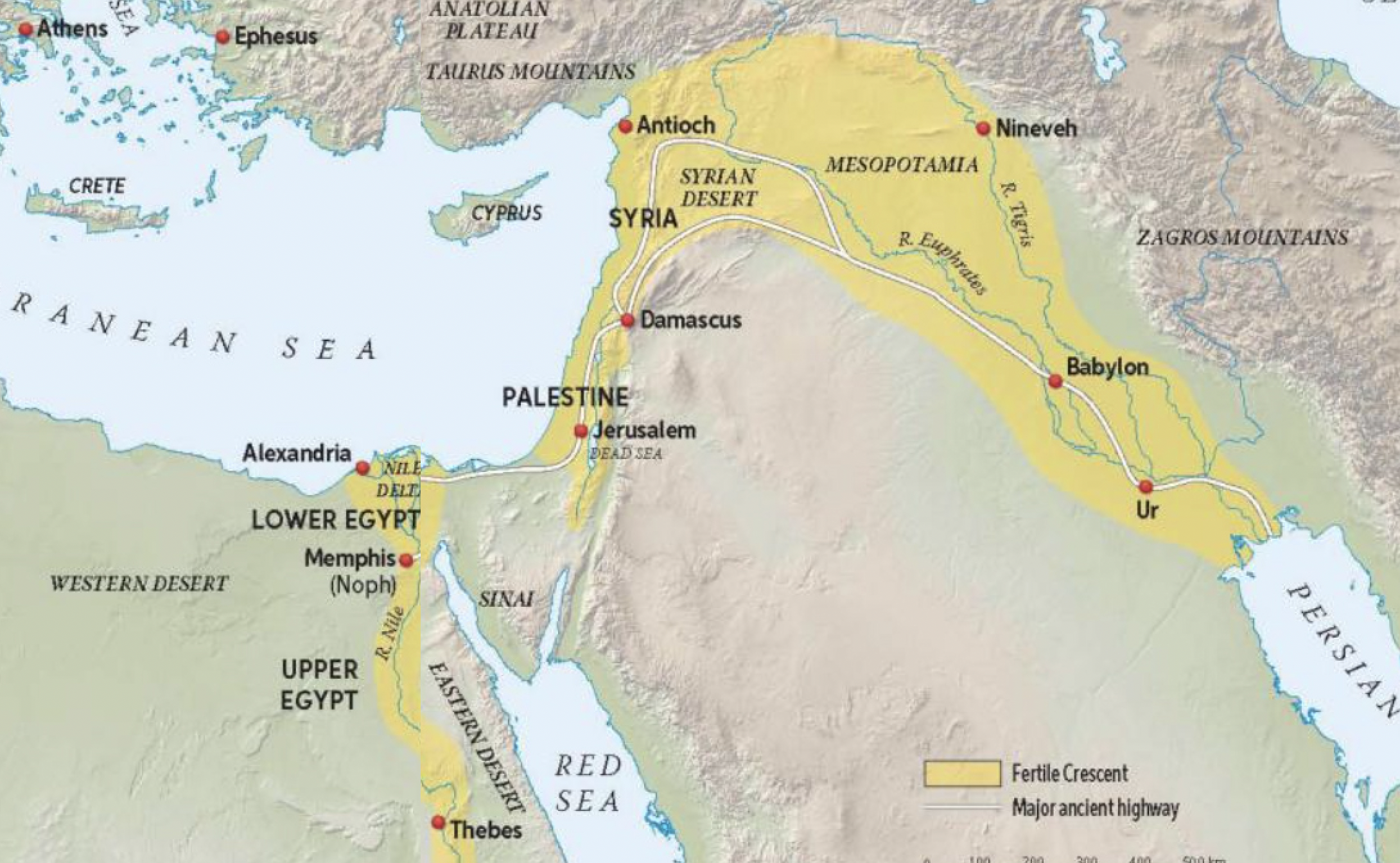 “Chaldea[1] (/kælˈdiːə/) was a small country that existed between the late 10th or early 9th and mid-6th centuries BC, after which the country and its people were absorbed and assimilated into the indigenous population of Babylonia.[2] Semitic-speaking, it Chaldea[1] (/kælˈdiːə/) was a small country that existed between the late 10th or early 9th and mid-6th centuries BC, after which the country and its people were absorbed and assimilated into the indigenous population of Babylonia.[2] Semitic-speaking, it was located in the marshy land of the far southeastern corner of Mesopotamia and briefly came to rule Babylon. The Hebrew Bible uses the term כשדים (Kaśdim) and this is translated as Chaldaeans in the Greek Old TestamentThe Hebrew Bible uses the term כשדים (Kaśdim) and t Wikhis is translated as Chaldaeans in the Greek Old Testament…” Wikipedia
“Chaldea[1] (/kælˈdiːə/) was a small country that existed between the late 10th or early 9th and mid-6th centuries BC, after which the country and its people were absorbed and assimilated into the indigenous population of Babylonia.[2] Semitic-speaking, it Chaldea[1] (/kælˈdiːə/) was a small country that existed between the late 10th or early 9th and mid-6th centuries BC, after which the country and its people were absorbed and assimilated into the indigenous population of Babylonia.[2] Semitic-speaking, it was located in the marshy land of the far southeastern corner of Mesopotamia and briefly came to rule Babylon. The Hebrew Bible uses the term כשדים (Kaśdim) and this is translated as Chaldaeans in the Greek Old TestamentThe Hebrew Bible uses the term כשדים (Kaśdim) and t Wikhis is translated as Chaldaeans in the Greek Old Testament…” Wikipedia

Imge Credit: The Student Bible Atlas by Tim Dowley – Amazon
On the above map, Chaldea was at the bottom of the area that touches the Persian Gulf. It is at the bottom of the area colored yellow.

Image Credit: Detail of a Map from the Student Bible Atlas by Tim Dowley
“Israel traced its origin to Babylonia. It was from “Ur of the Chaldees” that Abraham “the Hebrew” had come, the rock out of which it was hewn. Here on the western bank of the Euphrates was the earliest home of the Hebrews, of whom the Israelites claimed to be a part.

Image Credit: Detail of a Map from the Student Bible Atlas by Tim Dowley
“Israel traced its origin to Babylonia. It was from “Ur of the Chaldees” that Abraham “the Hebrew” had come, the rock out of which it was hewn. Here on the western bank of the Euphrates was the earliest home of the Hebrews, of whom the Israelites claimed to be a part. Sayce, A. H. Early History and the Surrounding Nations
“During a period of weakness in the East Semitic-speaking kingdom of Babylonia, new tribes of West Semitic-speaking migrants[3] arrived in the region from the Levant between the 11th and 9th centuries BC. The earliest waves consisted of Suteans and Arameans, followed a century or so later by the Kaldu, a group who became known later as the Chaldeans or the Chaldees. These migrations did not affect the powerful kingdom and empire of Assyria in Upper Mesopotamia, which repelled these incursions.
“These nomadic Chaldeans settled in the far southeastern portion of Babylonia, chiefly on the left bank of the Euphrates…Chaldea proper was in fact only the plain in the far southeast formed by the deposits of the Euphrates and the Tigris, extending about 640 kilometres (400 mi) along the course of these rivers and averaging about 160 km (100 mi) in width. There were several kings of Chaldean origins who ruled Babylonia.[4]: 178 From 626 BC to 539 BC, a ruling family referred to as the Chaldean dynasty, named after their possible Chaldean origin,[4]: 4 ruled the kingdom at its height under the Neo-Babylonian Empire, although the final ruler of this empire, Nabonidus (556–539 BC) (and his son and regent Belshazzar) was a usurper of Assyrian ancestry.
“The name Chaldaea is a latinization of the Greek Khaldaía (Χαλδαία), a hellenization of Akkadian māt Kaldu or Kašdu, suggesting an underlying /kaɬdu/.[5] The name appears in Hebrew in the Bible as Kaśdim (כשדים)[6] and in Aramaic as Kaśdāy (כשדי).[7][8][9]
“The Bible (Book of Genesis 22:22) uses the name Kesed (כשׂד, ancient pronunciation /kaɬd/[10]), the singular form of Kasdim(כַּשְׂדִּים), meaning Chaldeans. Kesed is identified as son of Abraham‘s brother Nahor (and brother of Kemuel the father of Aram), residing in Aram Naharaim. Jewish historian Flavius Josephus (37 – c. 100) also links Arphaxad and Chaldaea, in his Antiquities of the Jews: “Arphaxad named the Arphaxadites, who are now called Chaldeans.” ….
“Chaldea” or mat Kaldi generally referred to the low, marshy, alluvial land around the estuaries of the Tigris and Euphrates,[14] which at the time discharged their waters through separate mouths into the sea. …
Seat of the Deity Marduk-Baladan
“The tribal capital Dur Yâkin was the original seat of Marduk-Baladan.[15]
Ancient Chaldeans
The Chaldeans Were Migrant Nomads
“Behold the land of the Chaldeans; this people was not, till the Assyrian founded it for them that dwell in the wilderness: they set up the towers thereof, they raised up the palaces thereof; and he brought it to ruin.” Isaiah 23:13
“….the Chaldeans were not a native Mesopotamian people, but were late 10th- or early 9th-century BC West Semitic Levantine migrants to the southeastern corner of the region, who had played no part in the previous three millennia of Sumero-Akkadian and Assyro-Babylonian Mesopotamian civilization and history. Wikipedia
The Chaldeans Were Astrologers
“Astrologers. The immense scientific learning of the Chaldaeans (Neo-Babylonians) esp. in mathematical astronomy and its associated astrology, divination and rituals was taught in the Babylonian temple schools (1:4; 4:7). These texts were preserved in Aram. (formerly wrongly designated “Chaldee”) and in the cuneiform script used for copying Sumer. and Akkad. lit. In Daniel (2:2; 4:7; 5:7-11), the term “Chaldaean” was thus equated with “magicians, enchanters and soothsayers.” This was but the beginning of the use of the term for priests and specialists in these arts, as it appears in Herodotus (i. 181, 183) about 450 b.c.” Encyclopedia of the Bible
Were the Magi from Chaldea?
Scholars believe that the Magi were astrologers. Since Chaldea was in an area East of Bethlehem. I wonder if the Wisemen who visited Jesus in Bethlehem came from Chaldea.
“The ancient Chaldeans seem to have migrated into Mesopotamia sometime between c. 940 and 860 BC, a century or so after other new Semitic arrivals, the Arameans and the Suteans, appeared in Babylonia, c. 1100 BC.” Wikipedia
Abraham’s Ur Was in ChaldeaIn the Hebrew Bible
“Ur of the Chaldees” (Ur Kaśdim) is cited as the starting point of the patriarch Abraham’s journey to Canaan.
Discover more from Jacki Kellum
Subscribe to get the latest posts sent to your email.